The global strategic confrontation which continued from the previous year led to the active development and widespread introduction of new types of weapons and new types of space technologies aimed at military coordination. With the development and implementation of new types of communication, supply chains using ballistic missiles, and even projects to place nuclear weapons in orbit, 2023 will be remembered for the active fusion of the space and defense spheres.
Satellite communication and flexible coordination
Commercial satellite broadband communications are once again in high demand from military customers for use in advanced battlefield management. This year, the main challenge in this field was the issue of standardization of similar technologies, as different satellite Internet providers use different software for their equipment. This creates difficulties for the military as it increases the time needed to provide service to the end user due to the longer processing time of the different protocols used by the different providers.
The creation of a standardized architecture was one of the main themes of the AUSA conference, which took place on October 9-11 in Washington. The US military’s request was to obtain stable and flexible access to commercial satellite networks. The possibility of simultaneous access to different satellite modems located in different orbits (low, medium, and geostationary) would be able to guarantee the stability of military communications in case one communication link is lost.
However, different software makes satellites incompatible with each other. A possible solution could be the development of a heremulti-orbital modem — a device that will simultaneously communicate with the entire chain of military and commercial satellites by adapting various network protocols to a single standard. Such modems may be used in the interface adapter in the future CMOSS (C5ISR Modular Open Suite of Standards), which is installed on many American military vehicles, from new Abrams models to lightly armored Humvees.
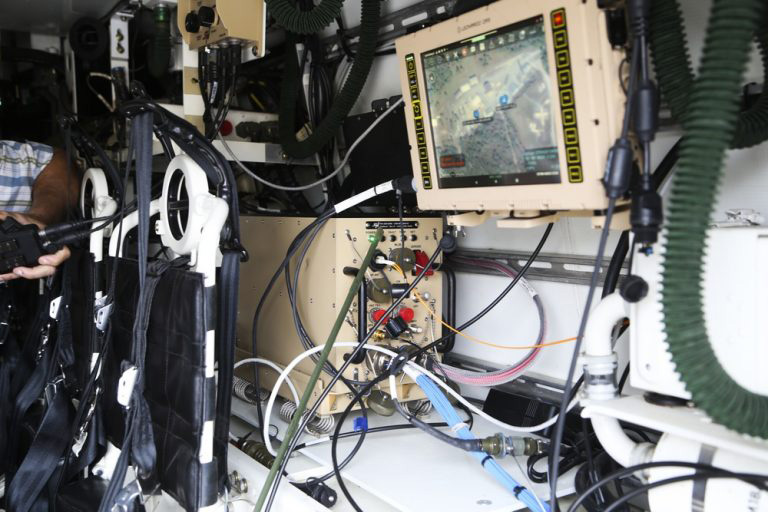
The application of a modular open system architecture (MOSA), of which CMOSS is a part, provides a portable and reliable solution for battlefield communications. The architecture is released from dependence on the software of different providers, giving it an increased level of protection against software errors and cyberattacks. It is also more understandable and accessible to the end military operator interacting with the system. The development of a modular new satellite communication architecture based on a multi-orbital modem will be handled by the Defense Innovation Unit of the Pentagon with the connection of a number of private companies.
Overall, “management reorganization” was one of the key themes for the Space Force this year. During 2023, the Space Systems Command was entrusted with management over two new divisions (system deltas): the first dealing with electronic warfare objectives, and the second with space positioning, navigation, and timing (PNT).
The creation of these two new deltas increases the level of synchronization of leading space technologies with the end user, because both operators and mission specialists are involved in the units, responsible for the system’s performance. The creation of the divisions will also allow their participation in all stages of planning and implementation of the mission: from training new specialists and purchasing equipment to the final implementation of operations. The main goal in this field remains the creation of a reliable feedback architecture between customers of new technologies on the one hand and their implementers on the other. It is likely that a similar model of using system deltas will be applied to other USSF units in the future.
And while a single standard for organizing communication in different orbits has not yet been created, SpaceX’s flotilla of “modems in low orbit,” known as Starlink, has not lost its urgency. Last year, the service proved itself well during the war in Ukraine. The size of the constellation reached 5,500 satellites by the end of November 2023, and in December of this year, SpaceX plans the first launches of satellites of Starlink v2.0.
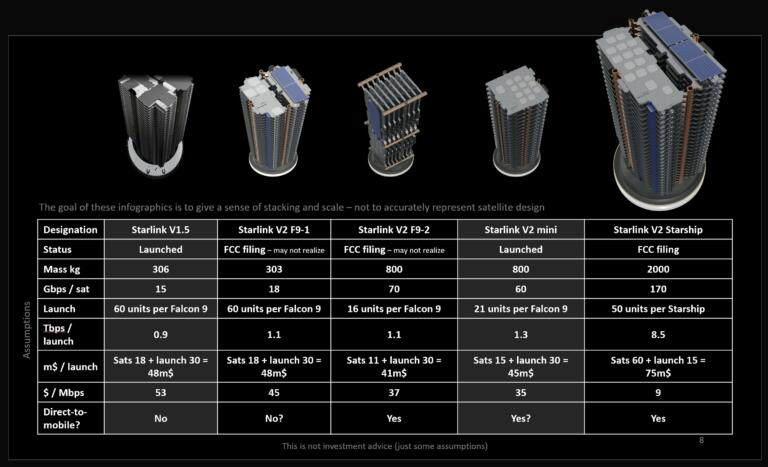
Source: @julienvm
The small and numerous satellites in low orbit, originally designed to provide commercial broadband Internet, quickly gained popularity with Ukraine’s military because they possessed one of the main attributes demanded by modern warfare – mobility. The satellites and receiving ground terminals weighed little, could be installed on transport and armored vehicles, and the systems were provided with regular and timely software updates from SpaceX itself, guaranteeing increased protection against cyber attacks.
The new conflict that broke out in Israel in October forced the world to remember Starlink once again. In its war against Hamas, particularly during urban military operations, the Israeli Defense Forces (IDF) needed a reliable and portable solution for organizing command communication. During his visit to the Kfar Aza kibbutz, Elon Musk agreed to provide Israel with Starlink satellite Internet capabilities for use by its government and military.
This year again saw increasing military demand for services from commercial companies for the provision of broadband satellite communications. However, while these services mainly came from low Earth orbit last year, this year there are increasingly frequent thoughts about the need to create an extensive multi-orbital system of repeater satellites.
However, in order to fully meet this need, it will first be necessary to achieve loyalty from private companies (largely based on favorable business conditions and a sufficient level of military orders) and to standardize the technology for stable interaction of services from different communication providers.
Interception satellites and laser dazzle systems
Wherever satellite communications exist, there will always be threats of interception and signal suppression. Recent times have increasingly demonstrated that interceptor satellites are more effective when they are deployed in orbit alongside active communications and reconnaissance satellites. This way, the interception signal does not have to pass through the Earth’s atmosphere, which allows for more accurate targeting of a moving satellite or an area that needs to be suppressed.
The presence of interceptors on Chinese satellites in orbit seriously threatens even the most advanced American satellites, which were designed precisely for the needs of military intelligence, such as the Advanced Extremely High Frequency (AEHF) series. This is of great concern to the Pentagon, and while the US currently still has a security blanket from the AEHF satellite network, the PRC is moving closer to new technologies that will be able to jam their signal if it gets close to them in orbit.
China, by the way, is close to being able to physically pull satellites from orbit. In January of last year, Beijing announced the successful testing of the Shijian 21 orbital tug, which docked with a defunct satellite of the Chinese BeiDou geo-positioning system and brought it out of geostationary orbit. Beijing has declared this technology to be for civilian use and insists that its main purpose remains the removal of space debris in orbit, but the Pentagon nevertheless sees it as a considerable threat to its intelligence and communication satellites. Of course, this can work only if it is necessary to assemble individual satellites in high orbits that function in small satellite constellations. It is difficult to imagine a situation in which the Chinese will be able to simultaneously even 1% of the deployed Starlink constellation (currently 55 satellites) out of orbit. Although for the purpose of combating satellites in low Earth orbit, Beijing has a solution based on an arsenal of anti-satellite missiles (ASAT).
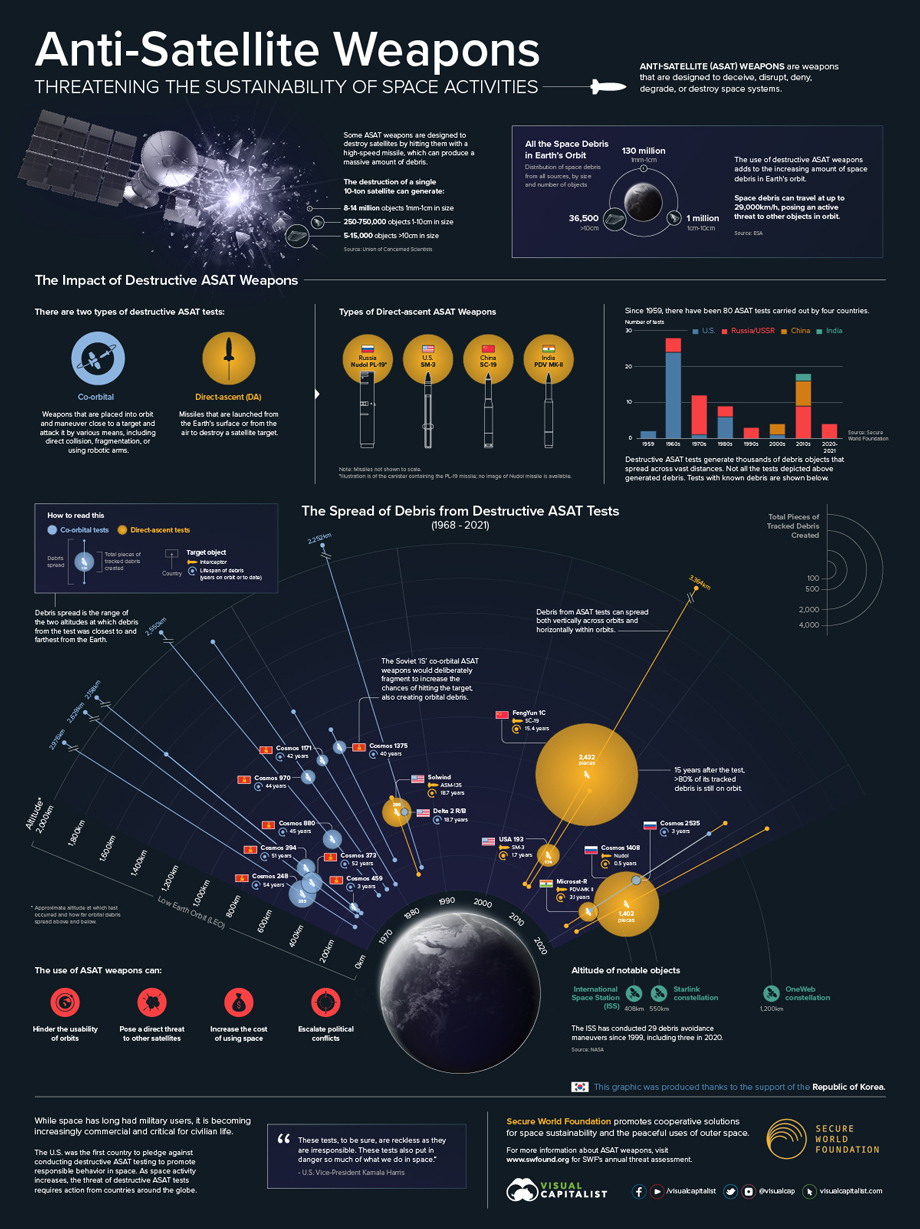
The Chinese have also demonstrated interesting engines for maneuvering in orbit. During an attempt by the American GSSAP (Geosynchronous Space Situational Awareness Program) satellites to approach the Chinese satellites Shiyan 12 01 and Shiyan 12 02, the Chinese satellites performed an adjustment of their divergence in orbit, avoiding observation with the help of orbital aerobatics.
As of the beginning of the year, the PRC owned a fleet of over 290 intelligence, surveillance and recognition satellites (ISR), some of them specifically aimed at intercepting American communication satellites, especially those operating in the Indo-Pacific region. China’s Beidou positioning system has more than 60% more presence in orbit than US GPS (49 active Beidou to 31 active GPS).
Russia is also continuing to develop its laser systems capable of blinding optical satellites by targeting them with laser beams from mobile and stationary Earth-based laser systems. Information about this came from statements by Senior Master Sergeant and Acting Senior Director of the Space Systems Intelligence Directorate Ron Lerch during his speech at the Space Systems Command industry meeting in Los Angeles this October.
Artificial intelligence and forecasting
Artificial intelligence (AI) has become an integral part of the modern world and is currently being used successfully in many businesses. The military is no exception, and with the help of machine learning algorithms, they plan to expand the boundaries of analytical forecasting and target tracking, as well as improving the processes of coordinating troops.
The main obstacle on this path may be the ethical problem of using AI technology for military purposes. The ability of AI to independently make decisions that can affect the termination of human lives has predictably led to public discussion on just how impartial these systems are, as well as the moral aspect of using technology for such purposes in general.
However, some US military officials do not see this as a problem. US Secretary of the Air Force Frank Kendall, in remarks at the Reagan National Defense Forum in early December, said that modern military AI systems seek not to completely replace –but rather to augment– human intelligence in terms of battlefield awareness and decision-making. First and foremost, this pertains to the analysis of large data sets in real time. Even at the current stage of development, AI systems are significantly superior to humans in recognizing potential targets, for example, based on satellite images. They have also proven themselves much better at controlling sensors and targeting. Such awareness of a potential threat can greatly facilitate the more effective allocation of resources in the planning and conduct of military operations.
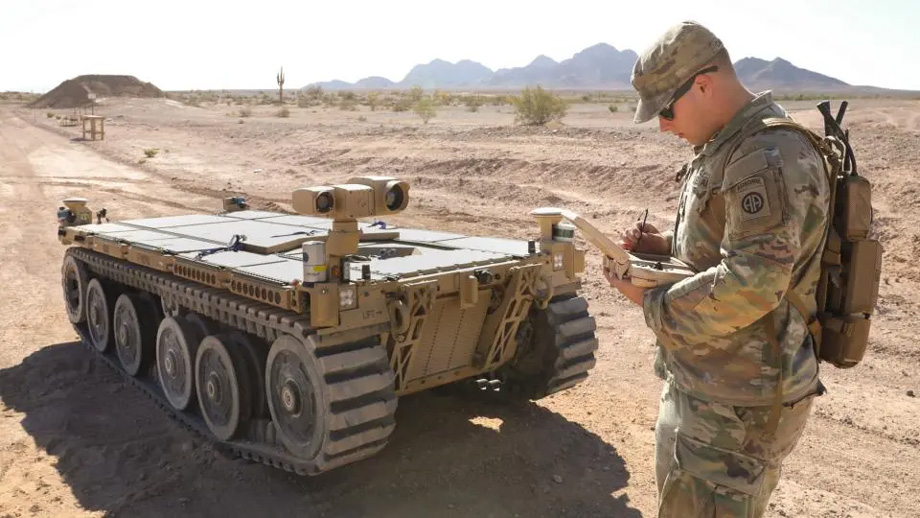
Photo: US Department of Defense / Sgt. Marita Schwab, public domain
Kendall also emphasized that any use of AI in the future must comply with all norms of international law, and that a human operator will always be embedded in the chain of decision-making regarding the use of automated weapons systems.
Development of fractional orbital bombardment systems
Despite the fact that the Outer Space Treaty of 1967 expressly prohibits the deployment of nuclear weapons in Earth orbit, the PRC continues to move confidently in developing its own fractional orbital bombardment system (FOBS). Beijing itself characterizes its FOBS as a payload in low Earth orbit which is placed on a hypersonic missile capable of changing its trajectory in flight using a retrograde thruster. Thus, FOBS munitions are able to return to the Earth’s atmosphere for bombardment, including with nuclear warheads.
The FOBS is largely invulnerable to most missile early warning systems that the US currently has because, unlike a missile that follows a predicted ballistic trajectory, a hypersonic missile travels at a very low trajectory (maximum altitude of up to 150 km) and is also capable of maneuvering. Thus, a FOBS missile would be almost invisible to most American missile early warning systems.
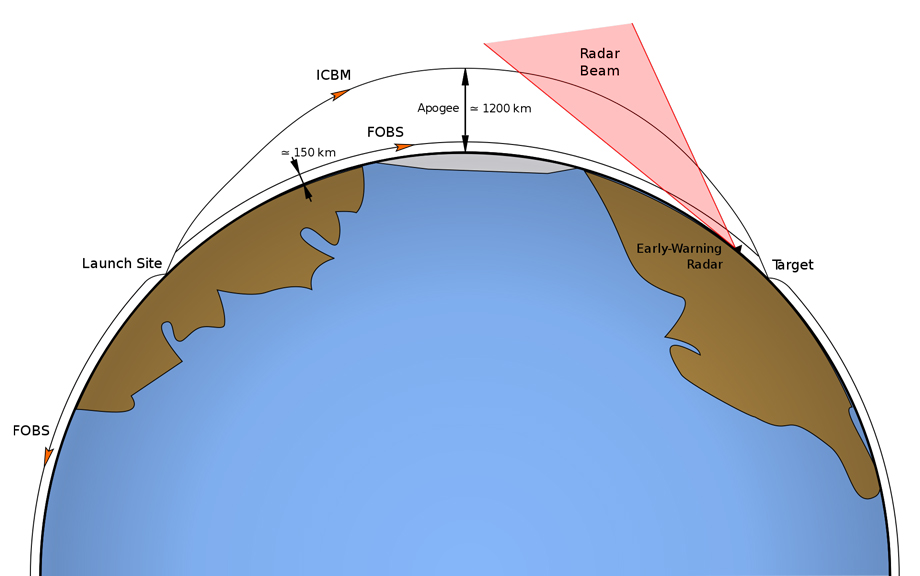
FOBS technology has been known since the Cold War. It was developed in the USSR in the 60s, but was decommissioned in 1983 after the signing of the Second Bilateral Soviet-American Strategic Arms Limitation Treaty” (SALT II).
But Beijing was not bound by the provisions of this agreement. American intelligence made its first statements about the successful testing of a Chinese FOBS back in 2021, but the PRC’s Ministry of Foreign Affairs denied that this is what was being tested. According to the Pentagon, the new analog FOBS combines the capabilities of new hypersonic missiles (at the flight stage) and a jet glider (which is separated from the missile at the stage of warhead delivery). During a test flight two years ago, which lasted 100 minutes, the Chinese orbital vehicle traveled nearly 40,000 km.
As of the end of 2023, it is not known for sure at what stage the development of Chinese FOBS technology is now (the PRC has kept the technology secret and is not making official statements). However, this year’s report from the US-China Economic and Security Review Commission, which was released on November 14, mentioned FOBS among the challenges present in the confrontation between two superpowers. If the FOBS is deployed in Earth orbit, the PRC can ensure the permanent presence of nuclear weapons in space, which will significantly increase the level of tension and add new challenges to US strategic planning.
Defense technology to counter hypersonics continues to receive significant funding, with about $248 million allocated last year through the Missile Defense Agency (MDA), plus about $7 million for a three-year defense system called Glide Breaker. In addition, the arsenal of the Space Development Agency already has test satellites with a group for tracking hypersonic missiles.
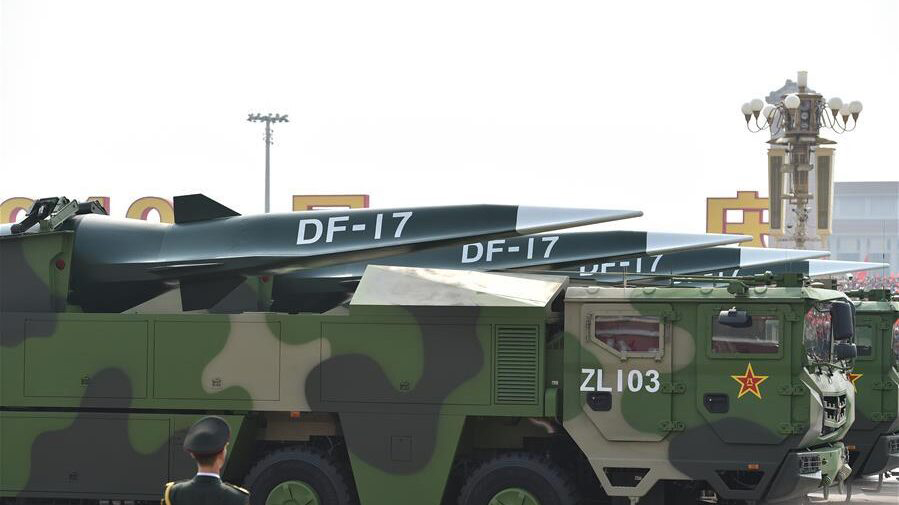
Source: Ministry of Defense of the People’s Republic of China
It was for the development of the FOBS project that in February of this year, China created a fifth force in the People’s Liberation Army of China (PLA), which was named the Near Space Command. It is this department that is to expand the capabilities of the Chinese nuclear triad: adding a hypersonic low-orbit option to the traditional land, air, and sea-based delivery methods. Among the other tools that will be subordinated to the new military branch are China’s arsenal of spy balloons operating in the upper layers of the stratosphere (stratostats).
At the very beginning of this year, for almost a week, Americans watched the flight of a Chinese stratostat during the infamous incident with the Chinese high-altitude balloon. Between January 28 to February 4, the stratostat was able to fly over a number of American states almost diagonally, cutting across the country. The reconnaissance vehicle entered US airspace on January 28, flying over Alaska and western Canada.
The balloon moved from the northwest to the southeast, becoming one of the main sensations in the American media for almost a week. When the stratostat reached the eastern United States and was over American territorial waters (near the coast of South Carolina), the US Air Force issued the order to destroy it. Perhaps the Air Force deliberately waited until the balloon was over water to have time to prepare a sea search operation for further study of the spy probe.
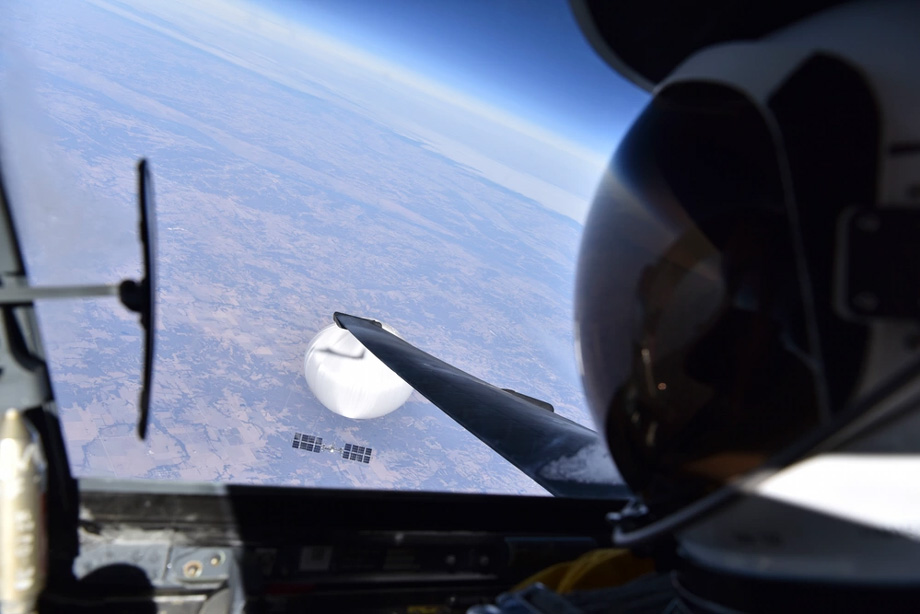
February 3, 2023
Source: (Photo courtesy of the Department of Defense)
Future technologies currently being developed by China’s Near Space Command include solar-powered high-altitude drones, which Beijing is likely planning to use for tactical high-altitude reconnaissance purposes. Despite the fact that China continues to emphasize that the newly created Near Space Command is still in the formative stage, and the specialized units have not yet been fully formed, this year’s incident with the spy balloon has clearly demonstrated that China already has certain technologies and is not hesitating to use them.
It is becoming more and more clear that China’s strategy is to build a new military doctrine in Earth orbit, using both experimental prototypes and refining technologies from the past. Along this path, China continues to attract new countries to the partnership, forcing the US to increase its level of coordination with its own allies.
Steps to strengthen global cooperation
The stable practice of sharing satellite intelligence data, which the US has been practicing for many years, is insufficient for modern times. Military technology and new communications and intelligence satellites continue to be produced primarily for US domestic use. American economic policy has contributed to the formation of a number of barriers which inhibit the sale of new technologies to American allies who need them in Europe, Asia, and the Middle East. The stalemate is forcing US Space Command to develop new research and acquisition programs to prevent military relaxation among the Western Bloc countries.
One possible way out of the current situation may be the strengthening of cooperation with the private space sector. More often than not, commercial technologies do not have the same level of secrecy as government projects, which significantly simplifies the mechanism of supplying them to allied countries. The main obstacle on this path may be export control. However, this model of cooperation still remains more effective than partnership under national military programs.
Today, the USSF is part of the “Five Eyes” defense alliance, which, in addition to the United States, also includes Great Britain, Canada, Australia and New Zealand. The US believes that this defense initiative should be expanded to facilitate trade and acquisition of defense space technologies, as well as improve supply chains which are currently tied to China, America’s main strategic competitor.
According to a recent study conducted by RAND, the different strategic views observed between the United States and its allies may hinder the establishment of a mechanism for cooperation and exchange of space technologies. Among other obstacles, the study also noted the presence of different infrastructure, the lack of joint projects, and the increased level of bureaucracy inhibiting cooperation in the field of global and space security.
The latest DoD space procurement report released by the Defense Affairs Council in early December also suggests that the Pentagon is using an inefficient government procurement system. Many controversial approaches in the organization of procurement significantly slow down the pace of the Pentagon’s introduction of new types of space weapons. As a possible solution, the report suggests the reorganization of procurement mechanisms to give them more freedom, as well as the introduction of flexible mechanisms present in the private sector.
The report also highlights the importance of applying approaches geared to the needs of each individual program, since they are currently mostly carried out according to standardized schemes. Greater authority given to the office of the Space Force’s senior acquisition officer could also strengthen the process of expediting and coordinating acquisitions and the development of new technologies, the RAND report noted.
As of the end of 2023, global partnership in the space sector clearly still faces a number of staff shortages, as well as inadequate interest in large-scale projects. However, this problem has also been seen in other branches of the military, which are gradually reorganizing sustainable procurement structures and expanding the scope of partnership relations.





